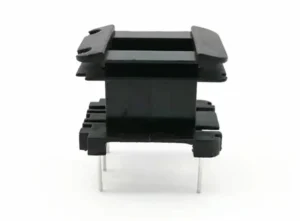
Know transformer bobbin materials and manufacturing processes to discover how to choose the most suitable materials and manufacturing methods.
Introduction
Brief Overview of the Importance of Transformer Bobbin Materials and Manufacturing Processes
Transformer bobbins are essential components in electrical transformers, providing structural support and insulation for winding coils. The materials used and manufacturing processes employed play a critical role in the performance and reliability of transformers.
Significance of Selecting the Right Materials and Manufacturing Techniques
Common Materials Used in Transformer Bobbin Manufacturing
Explanation of Different Materials
Discussion on Material Properties
Considerations for Material Selection
When selecting materials for transformer bobbins, factors such as voltage rating, temperature range, and environmental conditions must be taken into account. It’s important to choose materials that can withstand the operational requirements of the transformer while ensuring long-term reliability and performance.
Manufacturing Processes for Transformer Bobbins
Overview of Common Manufacturing Techniques
Explanation of Each Manufacturing Process
Importance of Quality Control Measures
Quality control measures are crucial during the manufacturing process to ensure consistency and reliability of transformer bobbins. This includes regular inspections, testing of material properties, and adherence to strict tolerances. By implementing robust quality control measures, manufacturers can deliver transformer bobbins that meet the highest standards of performance and reliability.
Factors Influencing Material Selection and Manufacturing
Discussion on Factors Affecting Material Selection
Consideration of Design Aspects During Manufacturing
Balancing Cost-effectiveness with Performance
It is essential to strike a balance between cost-effectiveness and performance when selecting materials and manufacturing techniques for transformer bobbins. While cost is a significant factor, it should not compromise the performance or reliability of the final product. Therefore, manufacturers must carefully evaluate various options to ensure optimal outcomes.
Future Trends in Transformer Bobbin Materials and Manufacturing
Exploration of Emerging Materials and Technologies
Discussion on Potential Advancements and Innovations
Conclusion
Recap of Key Points
Emphasis on Critical Role
It is evident that the careful selection of materials and the implementation of appropriate manufacturing processes are essential for optimizing transformer performance. Factors such as temperature range, voltage rating, and environmental conditions must be considered to ensure the longevity and efficiency of transformer bobbins.
Call to Action
For further assistance or consultation regarding transformer bobbin materials and manufacturing solutions, we encourage you to reach out to our team. We are dedicated to providing tailored recommendations and innovative solutions to meet your specific needs and requirements.